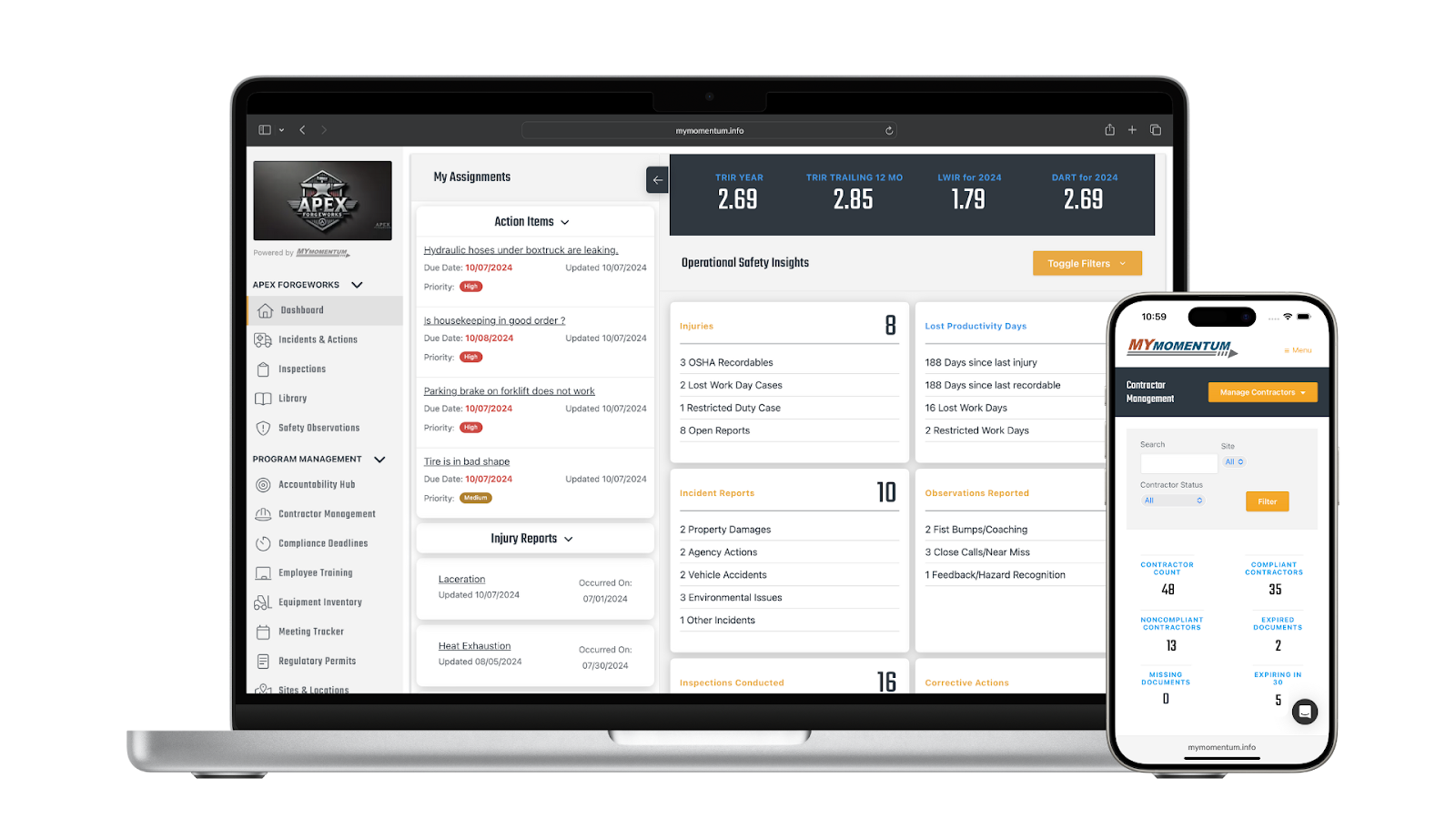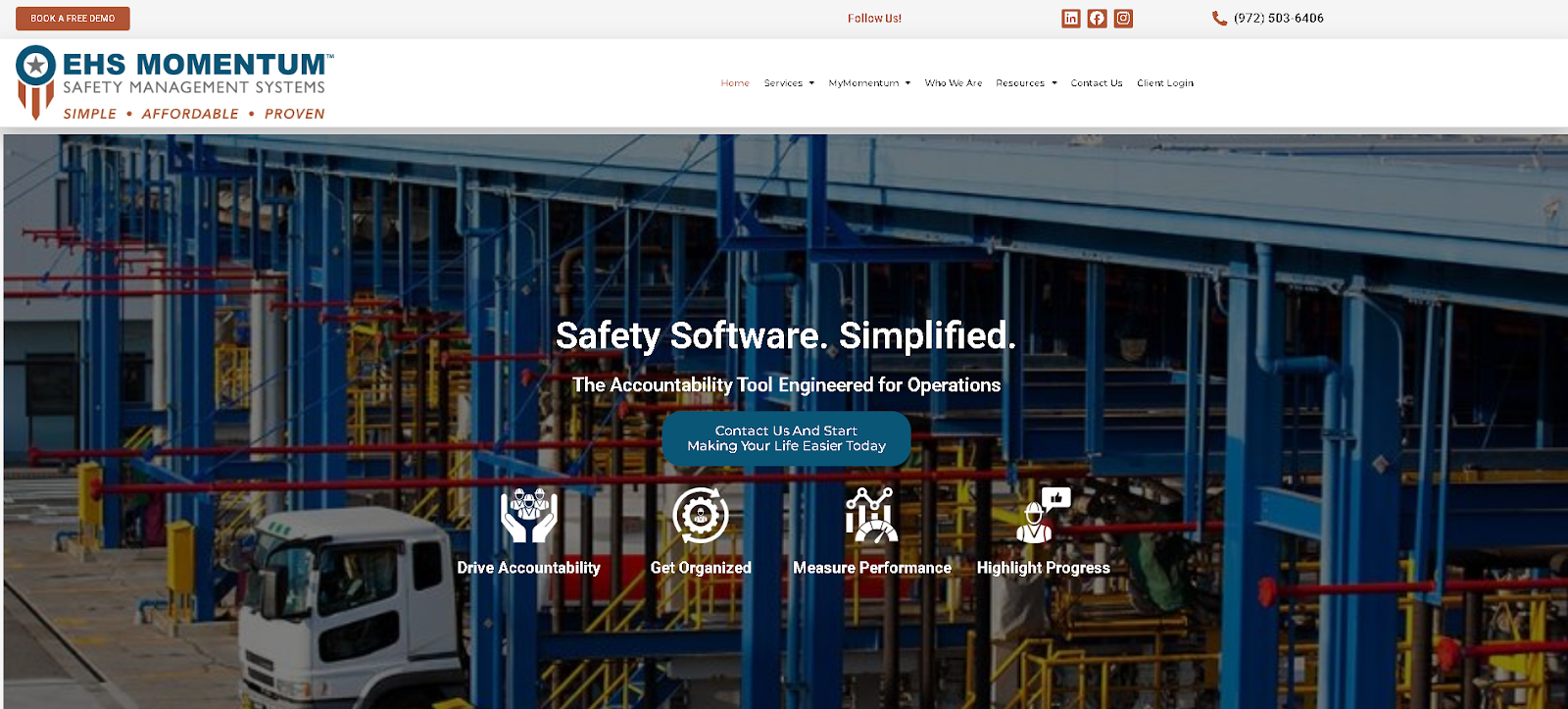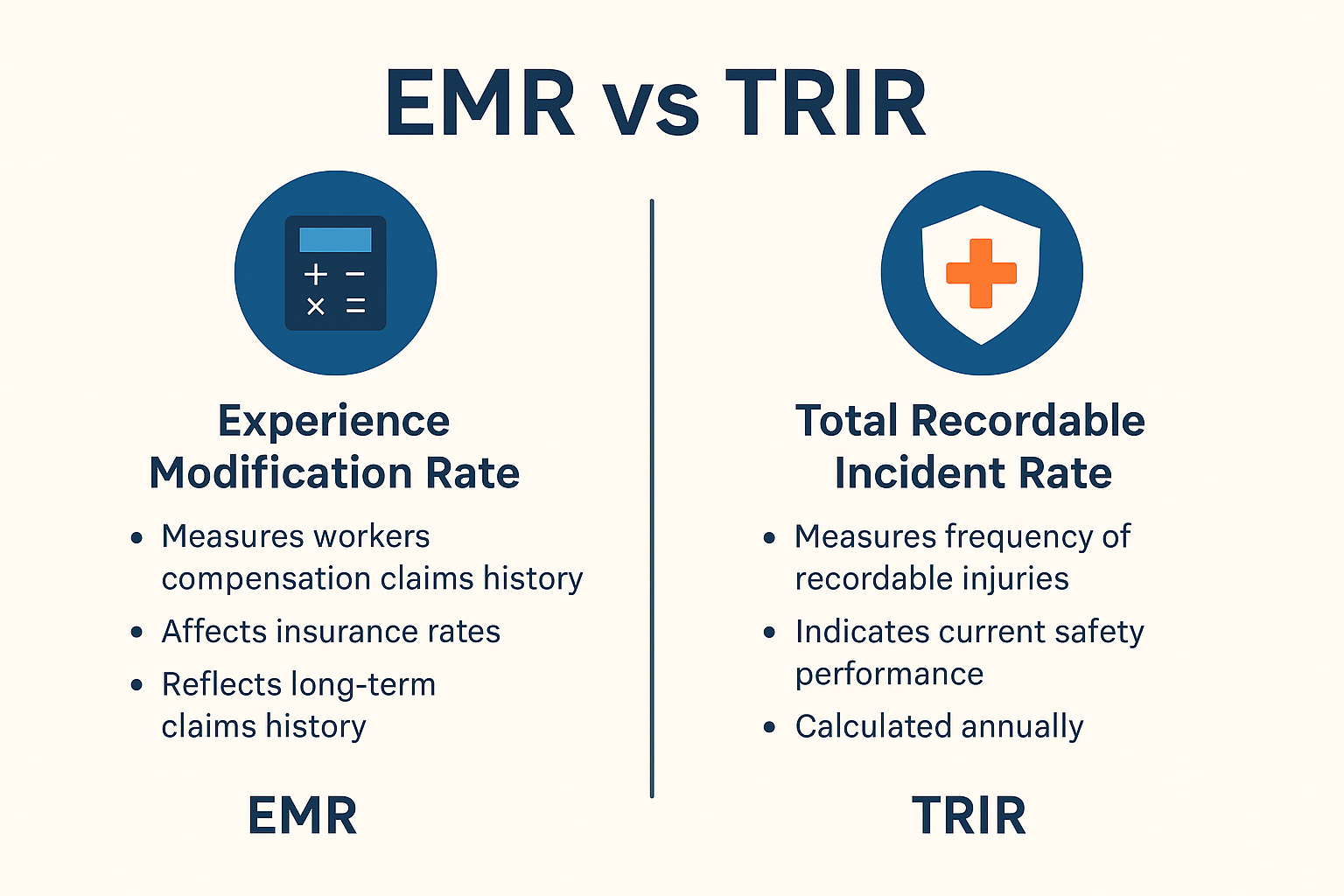As more organizations rely on third-party workers to meet project demands, the need for effective contractor management in health and safety has become urgent.
Whether you’re working with subcontractors, vendors, or specialized crews, these individuals are often exposed to the same hazards as your core workforce, but without the same familiarity with your procedures, safety rules, or culture.
That’s why a structured contractor safety program is no longer optional.
Without clear systems in place, gaps in training, oversight, and communication can lead to potential risks, OSHA citations, or worse, serious injuries.
This guide breaks down what effective contractor management looks like, why it matters, and how you can create a process that protects your workers, strengthens compliance, and supports a truly safe work environment.
What Is Contractor Management in Health and Safety?
Contractor management in health and safety refers to the process of overseeing and coordinating all health- and safety-related aspects of using contract labor on your job sites.
This includes:
- hiring contractors
- verifying their qualifications
- delivering site-specific training
- monitoring ongoing compliance
- making sure all safety requirements are met throughout the duration of the work
How MyMomentum Eases Contractor Safety Management in Health and Safety

MyMomentum offers a practical, easy-to-use safety management system that allows teams to:
- Digitize contractor onboarding, orientation, and training records
- Track qualifications and maintain audit-ready documentation
- Monitor real-time safety performance across worksites
- Achieve compliance with internal policies and external regulations
- Support overall worker safety with consistent oversight and feedback loops
Refining an effective contractor safety management program or building one from the ground up? EHS Momentum provides the tools and support you need to help you succeed.
Schedule a demo and take the first step toward safer, smarter contractor operations!
Why Is Contractor Management Important in Health and Safety?
Contractors often perform critical tasks in high-risk environments, but they’re not always fully integrated into your organization’s safety management process. That disconnect can create serious vulnerabilities if left unaddressed.
Unlike your own employees, contract workers may not be familiar with site-specific safety protocols, procedures, or expectations. And when contractor companies fail to meet your safety requirements, the risks, which are both legal and operational, fall on you.
Here’s why contractor management in health and safety is essential:
Accountability
Managing contractors requires more than a signed agreement. You need systems to make sure they meet your safety standards, follow your process, and work in alignment with internal policies.
Regulatory requirements
The Occupational Safety and Health Administration (OSHA) and other health administration bodies expect host employers to provide a safe work environment, even when contractor companies are involved.
Failing to do so can lead to compliance issues and legal violations.
Risk mitigation
Without strong oversight, you expose your organization to potential liabilities, including injuries, fines, and reputational harm.
Making sure all workers, including those you don’t directly employ, are qualified, trained, and monitored is key to reducing risks.
Efficiency and consistency
A defined contractor management program improves operational efficiency by verifying that training, supervision, and safety inspections are consistently applied across all job sites.
Employer Responsibilities under the Multi-Employer Worksite Policy
In many cases, OSHA holds multiple employers jointly responsible for safety conditions.
If you’re a controlling employer or one with general supervisory authority, you must enforce compliance, even if another company employs the contractors directly.
Main Components of Contractor Management in Safety Programs
To protect your workforce and meet regulatory expectations, your organization needs more than verbal agreements or informal oversight.
An effective contractor safety program relies on structure, consistency, and transparency. It should also work alongside your broader safety management system to make sure that all contractors involved meet the same standards as your internal employees.
Here are the main components of a high-functioning contractor management program:
Prequalification and Risk Evaluation
Start by defining the qualifications required for each contracted role. This includes reviewing technical skills, safety certifications, and past safety performance.
Prequalification also helps screen out unfit vendors and supports better compliance with your internal protocols and external regulations.
Safety Orientation and Onboarding
Every contractor should go through a structured orientation that covers their company’s safety practices, occupational health policies, emergency procedures, and site-specific risks.
Clear onboarding sets expectations and ensures all parties are prepared to follow safe practices from day one.
Training and Competency Verification
Even experienced contractors may lack the specific knowledge needed for your site.
Your program should provide training, validate qualifications, and document progress using a centralized software solution. This helps contractors understand the tools, processes, and hazards they’ll encounter.
Job Site Oversight and Performance Monitoring
Assign internal supervisors to oversee contractor work and monitor performance against established safety metrics.
Use consistent check-ins, task observations, and safety inspections to hold contractors accountable throughout the project.
Incident Reporting and Corrective Action
When safety incidents occur, contractors must be part of your response process. This includes contributing to investigations, helping identify root causes, and participating in follow-up actions.
Integrating them into your existing safety management workflow helps drive lasting improvements.
Documentation and Recordkeeping
Use a digital system or software solution to maintain detailed records of contractor qualifications, training completions, site access, and safety incidents.
Having this information organized and accessible is critical for demonstrating due diligence during audits or inspections.
Post-Project Evaluation and Feedback
Once work is complete, evaluate the contractor’s safety performance. Identify areas for improvement, note any potential risks or gaps, and maintain records for future reference.
Providing performance-based feedback also helps raise the bar for future engagements.
Optimize Contractor Safety Management with EHS Momentum

For many companies, managing contractor compliance has become more complex in the past several years.
Whether you’re overseeing multiple contractors across job sites or working with various types of subcontractors, staying on top of training, documentation, and oversight requires a smarter solution.
That’s where EHS Momentum comes in.
As a trusted provider of safety consulting and compliance solutions, EHS Momentum helps organizations strengthen their approach to contractor safety management through expert guidance and proven frameworks.
We do this through our platform, MyMomentum.
FAQs About Contractor Management in Health and Safety
What is the meaning of contractor management?
Contractor management refers to the process companies use to oversee third-party workers and ensure they meet all safety, training, and compliance requirements while on-site.
Does OSHA require a contractor safety program?
While OSHA doesn’t mandate a specific format, it does require that all employees, including contractors, are protected under applicable regulations.
An effective contractor safety management program helps fulfill these obligations.
What is a safety management system in construction?
A safety management system is a structured approach to managing workplace safety in construction. It includes training, inspections, hazard controls, and makes sure both employees and contractors follow safety protocols.
What is a contractor safety plan?
A contractor safety plan outlines expectations, compliance procedures, and safety performance benchmarks that contractors must meet. It’s an essential tool in any contractor safety strategy.








